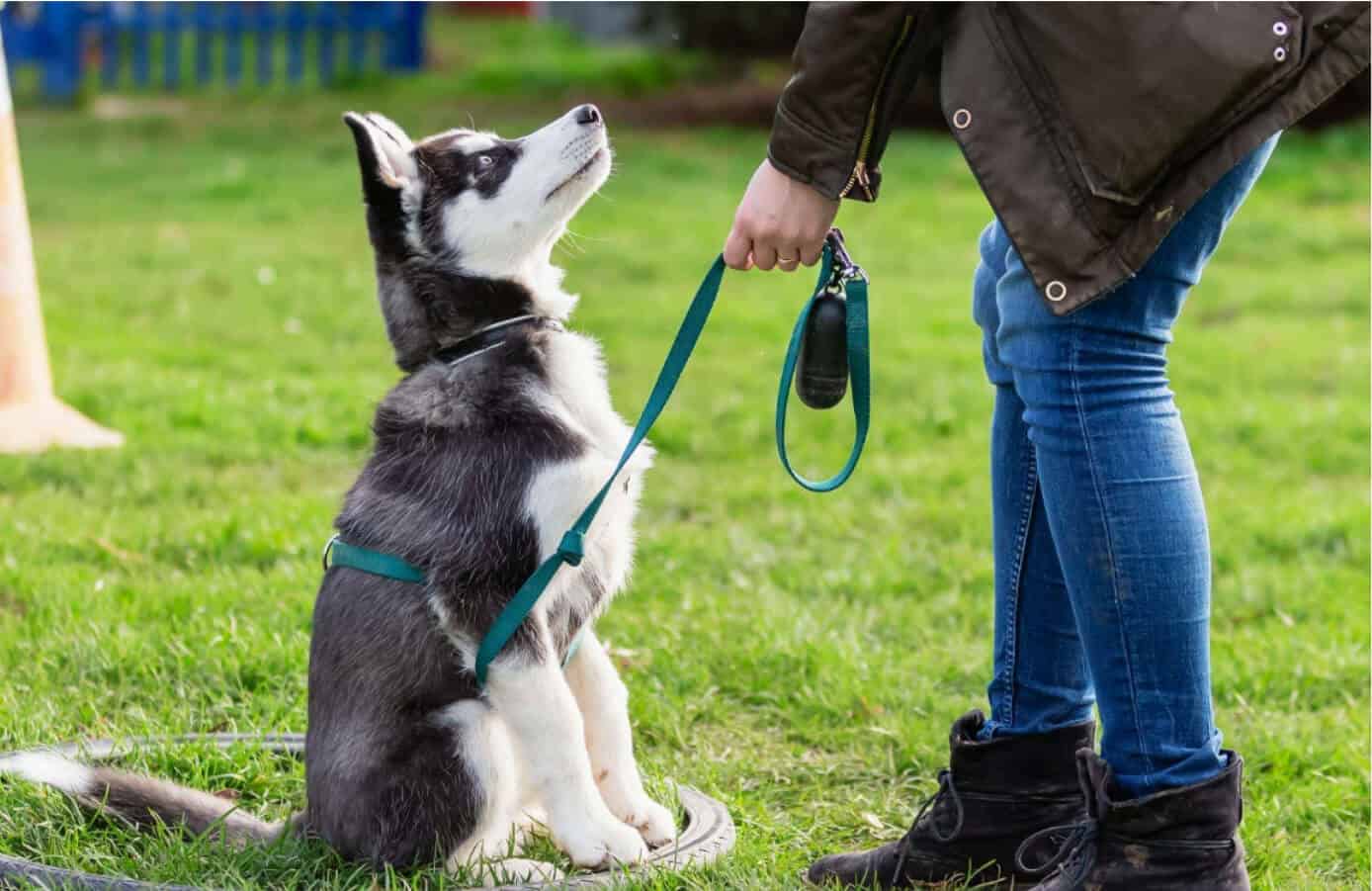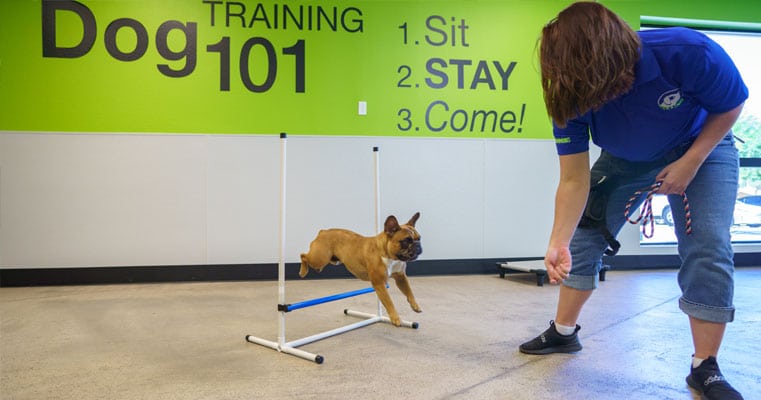Essential Tips for Successful Dog Training: A Guide for Beginners
Essential Tips for Successful Dog Training: A Guide for Beginners
Blog Article
Top Pet Training Methods Every Owner Need To Know

Favorable Reinforcement Methods
Making use of positive support techniques is vital for effective pet training, as it cultivates a relying on bond between the canine and the instructor. This approach concentrates on satisfying desirable actions instead than punishing undesirable ones, producing an atmosphere favorable to discovering. Incentives can include treats, praise, or playtime, which motivate dogs to repeat the habits that earn them these incentives.

In addition, this method enhances the canine's enthusiasm for training sessions. When dogs connect training with positive experiences, they are a lot more involved and responsive. Past immediate therapy, favorable reinforcement encourages a collaborative relationship in between the dog and trainer, reducing stress and anxiety and anxiety
To optimize efficiency, it is important to supply incentives without delay, making sure the pet connects the habits with the support. Basically, positive support techniques not only produce better-trained pets but also advertise an unified collaboration in between dog and owner.
Clicker Training Approach
The remote control training method is a very effective method that builds on the concepts of positive reinforcement by adding an unique noise to mark preferred habits. This method utilizes a small handheld gadget that generates a clicking noise, allowing fitness instructors to interact with their pet dogs in a clear and immediate manner. When a canine performs a habits that the proprietor wants to encourage, the remote control is activated, complied with by an incentive, normally in the type of deals with or appreciation.
The secret to successful remote control training depends on uniformity and timing. It is essential to click at the exact moment the wanted habits happens, guaranteeing that the canine links the noise with the action and the succeeding incentive. This approach not just boosts communication however likewise cultivates a more powerful bond between the owner and the canine, as it urges interaction and interaction during training sessions.
Clicker training can be put on a variety of commands and behaviors, from standard obedience to extra complicated methods. Its convenience and performance make it a popular strategy among specialist fitness instructors and pet dog proprietors alike, leading the method for a responsive and well-trained canine buddy.
Chain Training Fundamentals
Effective leash training is important for guaranteeing a risk-free and delightful strolling experience for both pet dogs and their proprietors. A flat collar may function for some pet dogs, while others may profit from a harness that reduces drawing.
Introduce your pet to the chain gradually, permitting them to explore it in a comfy environment. This includes gratifying your pet for strolling next to you instead than pulling ahead.
If your dog starts to draw, stop strolling immediately. Additionally, practice numerous walking settings to aid your dog adapt to distractions.
Routine practice will strengthen your pet's understanding of leash rules. Keep in mind that leash training is a recurring process; persistence and consistency will yield the best results, promoting a positive experience for both you and your canine buddy.
Socializing Methods
Socializing is an important facet of dog training that should preferably begin throughout puppyhood yet can be beneficial at any age. Effective socialization helps canines develop confidence and lowers the likelihood of behavior problems. To apply successful socializing strategies, expose your dog to a selection of environments, individuals, and various other animals.
Start with regulated settings, such as pup courses or organized playgroups, where young pet dogs can interact securely. Progressively introduce your pet dog to new experiences, including different noises, surface areas, and activities. Make sure these encounters are rewarding and favorable to establish a feeling of safety.
For adult canines or those lacking direct exposure, start with low-stress circumstances. Check Out Your URL Short, positive communications with friendly people and calm dogs can produce positive organizations. Use treats and praise to reinforce preferable behaviors throughout these experiences.

Uniformity and Persistence
Recognizing the value of consistency and perseverance in pet dog training is important for accomplishing long-term outcomes. Inconsistent training can lead to confusion, making it hard for the canine to realize behaviors or commands, ultimately preventing development.
Moreover, persistence is an essential part of effective training. Dogs, like humans, learn at their own speed. Some might understand principles promptly, while others may take much longer. It is essential for proprietors to stay helpful and calm, reinforcing positive habits without turning to irritation or punishment. This promotes a trusting relationship between the canine and owner, motivating an extra ready and passionate learner.
To grow uniformity and persistence, establish a routine training routine, use the very same commands, and ensure that all family participants use the very same training concepts - Dog training. By doing so, you create a steady setting favorable to learning, enabling your pet to grow and establish right into a well-behaved companion
Final Thought
In conclusion, reliable dog training methods, such as positive support, clicker training, and appropriate chain training, are important for cultivating a healthy and balanced owner-dog partnership. Additionally, carrying out socializing approaches and keeping uniformity and patience throughout the training procedure contributes considerably to a pet dog's general health. By incorporating these approaches, canine owners can help with the development of well-adjusted, loyal here are the findings family pets, eventually enhancing the high quality of life for both the owner and the pet.
Among the most prominent techniques are positive support, remote control training, and leash training, each offering distinct benefits that add to a mannerly pet dog. As we discover these fundamental strategies, it comes to be noticeable that mastering their nuances can considerably impact the training experience and the pet dog's general behavior.Using favorable reinforcement methods is essential for efficient canine training, as it fosters a trusting bond between the pet dog and the instructor.In final thought, effective dog training methods, such as positive support, remote control training, and correct chain training, are essential for promoting a healthy and balanced owner-dog partnership. By integrating these methods, canine owners can assist in the advancement of well-adjusted, obedient pets, eventually improving the quality of life for both the owner and the pet.
Report this page